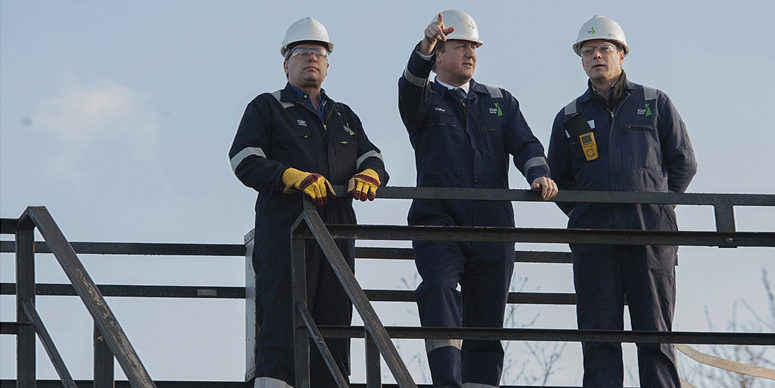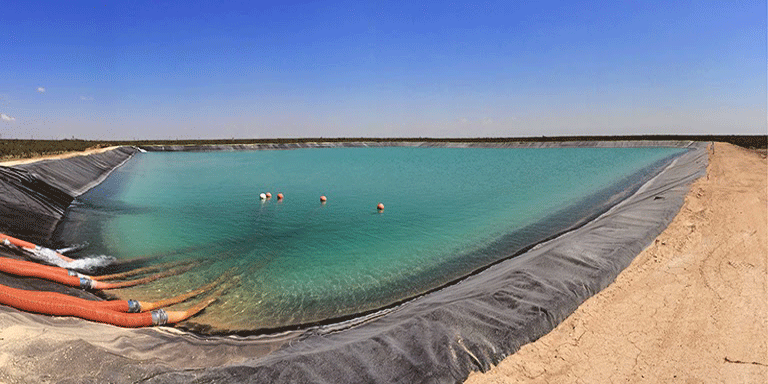Operators face fiscal obstacles when producing in this unconventional play.
“Fraught with risk, but loaded with upside” is the mantra of the day as operators tackle the southeastern New Mexico Avalon Shale.This is a horizontal oil and gas play that can be on the edge from an overall net present value (NPV) standpoint, even though the typical percentage of liquid hydrocarbons is high. From a geological standpoint, the Avalon extends spatially across eight counties in New Mexico and West Texas, but the principal drilling and completion (D&C) activity is focused in New Mexico’s Eddy and Lea counties .
The Avalon Shale (occasionally known as the Leonard Shale in southern Lea County) is actually a sub-unit of the Bone Spring, a thick Permian age deposit in the Delaware Basin. The Avalon is generally located directly underneath a regional limestone layer between 5 and 40 feet thick called the “Bone Spring Marker,” which is located underneath a series of alternating sands and mudstones known as the Brushy Canyon, a sub-unit of the Delaware Formation.
Operational Risks
There is generally an upper and lower shale and sandstone stringer package, separated and identified by thin carbonate stringers. Most often, both of these silica-based shale units are considered productive and are therefore targeted with a combination of horizontal drilling and multiple stage hydraulic fracturing. The industry considers the Avalon a combo play, a combination of a conventional, low permeability, Darcy parameter volumetric decline reservoir and an unconventional shale.
Operators face a number of fiscal risks when operating in the Avalon:
Propped hydraulic fractures that inadvertently penetrate the Brushy Canyon formation can become conduits for thousands of barrels of high-chlorides brine produced as an unwanted by-product. These are fluids that must be re-injected at considerable cost.
In cases where the Avalon is predominantly shale (without substantial interbedded sand stringers), then overall acceleration of reserve recovery can be lower than peer properties. The risk in this case is the likelihood of sub-commercial extraction rates early in the production history of a given well.
Operational risk associated with a slow D&C process learning curve is a real factor in the early delineation of acreage. Process directly impacts the performance of wells in this play, and optimizing it can be a major challenge if insufficient research is not performed.
The regulatory environments under which Eddy and Lea county operations are conducted are substantially more complex than in other domestic unconventional hydrocarbon plays. The incremental cost of compliance is high enough to impact overall NPV in a fiscally material way.
Reserve Recovery
The early acceleration of reserve recovery in the Avalon Shale has improved in the last two years over initial industry efforts by approximately 20 percent. A typical well now has first month average daily production of 200 barrels (bbl) of condensate or oil and 600 million standard cubic feet (mscf) of liquids-rich gas, with hyperbolic declines sporting exponents of between 0.55 and 0.71 (initial decline rates of between 70 and 90 percent). Many wells outperform this baseline, and therefore could be considered commercially viable by some operators, as long as liquid commodity prices remain above ±$75/bbl.
Because of the risk associated with producing large volumes of high-chlorides brine from the Brushy Canyon formation, area-specific completion efforts have focused on locating the highest lateral landing elevation that can ensure stimulation of the Upper Avalon members, while avoiding induced fractures that break through the Bone Spring Marker and into high permeability brine-bearing Delaware sands.
The most successful completions employ fracturing fluids with a high-viscosity component to them that allows transport of conductive proppant above the lateral elevation into shallower portions of the Upper Avalon. Treatments involving 100 percent slickwater risk placing proppant only below the lateral elevation, thereby risking the bypassing of potentially productive reservoir associated with additional pay above.
Lowering Surface Tension for Increased Recovery
Recently, there has been increased interest in:
Reducing surface tension and interfacial tension between the rock and injected fluids
Lowering capillary forces that must be overcome for hydrocarbons to enter and flow through a given induced and propped fracture。
An implied goal is to increase load recovery, which decreases the total volume of adsorbed water that could conceivably hinder hydrocarbon flow. It is thought that hydraulic fracturing in this play most often results in relatively simple bi-wing induced fractures. Some portions of the play exhibit a moderately low differential between the two principal in-situ stresses ?hmax and ?hmin. When this is the case, induced vertical fractures can propagate in two directions. Generally, the primary direction is approximately N45 degrees E (NE-SW), and a smaller, less dominate azimuth can sometimes be detected running N45 degrees W.
The ramifications of a low to moderate relative degree of induced far-field fracture complexity are fiscally important, in that a high fracture initiation point count per unit of lateral length is required to expose sufficient propped fracture surface area to both Avalon lobes. This is generally accomplished with a combination of at least 3.5 stages/1,000 feet of lateral and four to five perforation clusters per stage. A typical horizontal completion involving 15 stages pumped at 80 barrels per minute could require (with excess) between 11,000 and 15,000 hydraulic horsepower of pumping capacity.
Recycling Load Water
Southeastern New Mexico is located in one of the most arid regions of the United States. Locating and positioning sources of fracturing water has become a prime focus of entities that operate Avalon Shale properties. Water is often hauled or pumped more than 20 miles to a central temporary storage facility that will be used for hydraulic fracturing operations. Not only has this prompted serious investigation into more borderline and brackish sources of water, but it has stimulated intense interest into recycling load water recovered from previous stimulation efforts on offset properties.
Recycling load water can be a highly specialized operation, as dissolved solids vary substantially from one area to the next, and therefore each project becomes a unique exercise in the customization of treatment options. The same 15-stage treatment referred to above would normally require 75,000 to 120,000 bbl (plus excess for bottoms and unforeseen operations) of suitable fracturing water. The logistics associated with transportation and preparation of these large quantities can be formidable. Completing four to eight parallel wells in a single operation could involve storing, treating and handling of up to 50 million gallons of water.
Success in some portions of the Avalon has recently prompted further exploration in the deeper first, second and third Bone Spring, where there are similar combinations of organic shales and ultra-low permeability sandstones and limes. These are positioned vertically in between the Avalon Shale and the Wolfcamp formations and are spatially located in both New Mexico and Texas counties throughout the Delaware Basin. Early public production results are providing hints that these lower zones can be just as productive as the Avalon Shale.

 石油圈
石油圈



